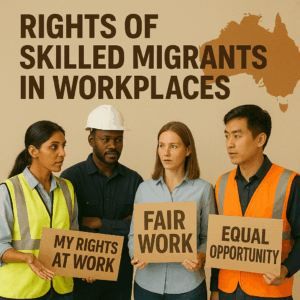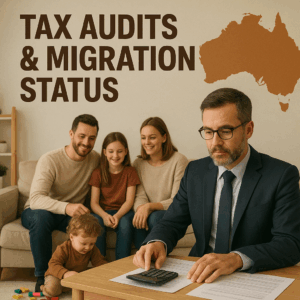Discover the essential requirements, assessment steps, and migration pathways for tradespeople—plumbers, carpenters, and more—seeking to work in Australia.
Introduction
Australia’s construction and infrastructure boom has created a critical demand for skilled tradespeople, especially in plumbing, carpentry, and related fields. With attractive salaries and clear migration pathways, Australia is a top choice for trades professionals worldwide. This guide covers the key tradespeople migration Australia requirements, practical tips, and challenges for those seeking a successful move.
Understanding Skilled Migration for Tradespeople
Australia’s skilled migration program offers robust opportunities for tradespeople. Occupations like plumber and carpenter are consistently featured on the skilled occupation list trades Australia, opening doors to permanent residency and rewarding careers.
Key Visa Pathways
- Skilled Independent Visa (Subclass 189): For highly skilled tradespeople, no sponsorship required.
- Skilled Nominated Visa (Subclass 190): State or territory nomination adds extra points.
- Skilled Work Regional (Provisional) Visa (Subclass 491): For those willing to work in regional areas, often with additional incentives.
- Temporary Skill Shortage (TSS) Visa (Subclass 482): Employer-sponsored, with pathways to permanent residency.
- New Skills in Demand Visa: Recently introduced for high-demand trades.
Each visa has unique eligibility criteria, but all require a positive skills assessment and meeting the migration points test for tradespeople.
Skills Assessment: The Cornerstone of Trades Migration
A positive skills assessment is mandatory for trades migration. The process is managed by Trades Recognition Australia (TRA), which evaluates qualifications, work experience, and practical skills.
Assessment Pathways
- Migration Skills Assessment (MSA): For applicants with formal qualifications and work experience.
- Offshore Skills Assessment Program (OSAP): For trades on the skills shortage list, requiring both document review and practical assessment.
- Job Ready Program (JRP): For graduates of Australian qualifications, involving workplace experience and assessment.
Plumbing and Carpentry Specifics
- Migration skills assessment plumbing: Requires proof of formal training (apprenticeship or equivalent), work experience, and sometimes a practical test.
- Migration skills assessment carpentry: Similar requirements, with emphasis on recognized qualifications and hands-on skills.
Tip: Ensure all trade qualifications are recognized and equivalent to Australian standards. Use the trades recognition Australia assessment process for guidance.
Qualification Recognition and Documentation
Proper documentation is crucial for a smooth migration process. Here’s what you need:
Essential Documents
- Certified copies of trade qualifications (apprenticeship certificates, diplomas).
- Detailed employment references outlining duties, duration, and skills.
- Evidence of supervised work experience (for plumbing apprenticeship recognition Australia or carpentry qualification recognition Australia).
- English language test results (IELTS, PTE, TOEFL) meeting visa requirements.
- Identity documents and police clearances.
Migration tips for tradespeople Australia: Organize documents early and ensure translations are certified if not in English.
Work Experience and Assessment Requirements
Australia values both formal qualifications and practical experience. The trades migration work experience requirements generally include:
- At least three years of relevant post-qualification experience.
- Recent employment in your trade (usually within the last two years).
- For some trades, a minimum period of apprenticeship or supervised training.
Trades migration documentation Australia must clearly demonstrate your skills and recent work history.
Visa Eligibility and Sponsorship Options
Plumbing Visa Eligibility Australia
- Plumbers must be on the skilled occupation list and have a positive TRA assessment.
- Meet English language and health/character requirements.
- State nomination or employer sponsorship can boost eligibility.
Carpentry Visa Sponsorship Australia
- Carpenters are in high demand, especially in regional areas.
- Employer nomination schemes and regional migration programs offer extra incentives.
Skilled visa for plumbers Australia and skilled visa for carpenters Australia both require careful alignment with the current trades migration skill shortage occupation list.
Regional Migration and Incentives
Australia actively encourages tradespeople to settle in regional areas through:
- Extra points for regional nomination (Subclass 491).
- Priority processing and additional support services.
- Regional migration for tradespeople Australia offers better job prospects and faster visa outcomes.
Trades migration regional incentives Australia: Research state and territory occupation lists for targeted opportunities.
Employer Nomination and Temporary Visas
Trades Migration Employer Nomination Scheme
- Allows employers to sponsor skilled tradespeople for permanent residency (Subclass 186).
- Requires at least three years of relevant experience and a valid skills assessment.
Temporary Skill Shortage Visa for Tradespeople
- Enables short-term work with Australian employers.
- Offers pathways to permanent residency after meeting work and skills criteria.
Note: Employer sponsorship often leads to faster visa processing and job security.
Permanent Residency Pathways and Processing Times
Tradespeople have clear trades migration permanent residency pathways:
- Direct PR via Subclass 189 or 190 for high-scoring applicants.
- Regional PR after three years on Subclass 491.
- Employer-sponsored PR through Subclass 186.
Trades visa processing times Australia vary but typically range from 6 to 12 months, depending on visa type and documentation quality.
Challenges in Trades Migration
Common Trades Migration Challenges Australia
- Navigating complex skills assessment procedures.
- Meeting strict documentation and qualification standards.
- Adapting to Australian workplace safety and licensing regulations.
- Competition for metropolitan jobs; regional areas may offer better prospects.
Migration tips for tradespeople Australia: Seek professional advice, stay updated on occupation lists, and consider regional opportunities for a smoother process.
The Role of Licensing and Registration
Some trades, especially plumbing and electrical, require state-based licensing in addition to migration approval. For example:
- Plumbers must obtain state-specific licenses after arrival.
- Carpenters may need to register for certain building and construction roles.
Building and construction trades migration Australia often involves post-arrival upskilling or licensing exams.
The Future: Digital Skills and New Trades in Demand
Australia’s construction sector is evolving, with increased demand for tradespeople skilled in:
- Green building and sustainable construction.
- Digital tools (BIM, smart home installation).
- New Skills in Demand visa for trades reflects these changes, targeting emerging specialties.
Conclusion
Migrating to Australia as a tradesperson—plumber, carpenter, or other skilled worker—offers excellent career prospects and pathways to permanent residency. Success depends on meeting skills assessment standards, preparing thorough documentation, and choosing the right visa and location. Stay informed, be proactive, and leverage regional incentives for the best results.

